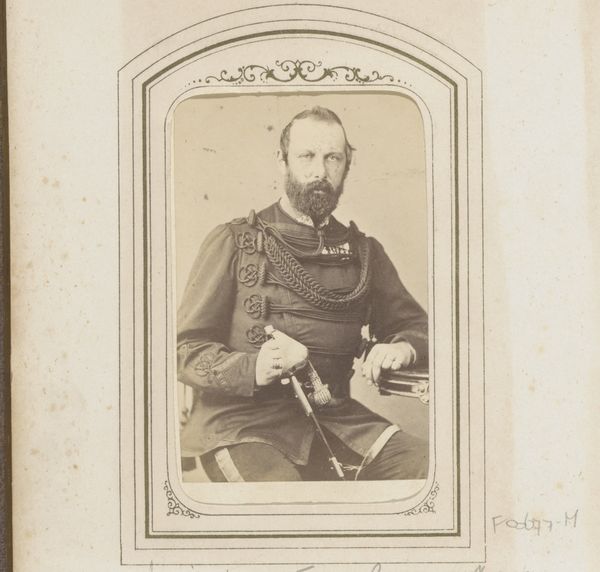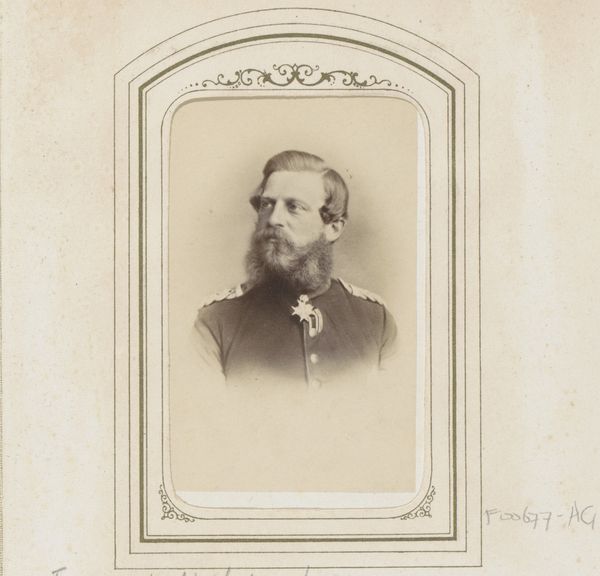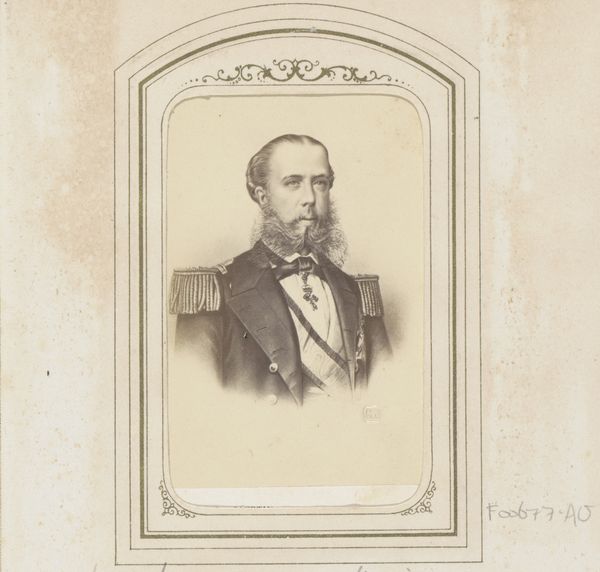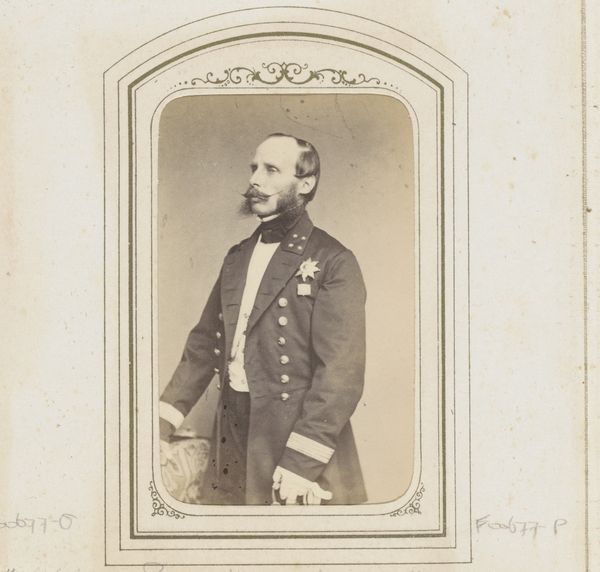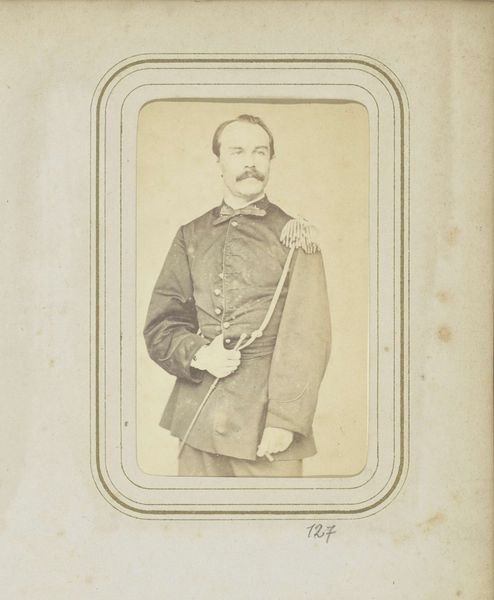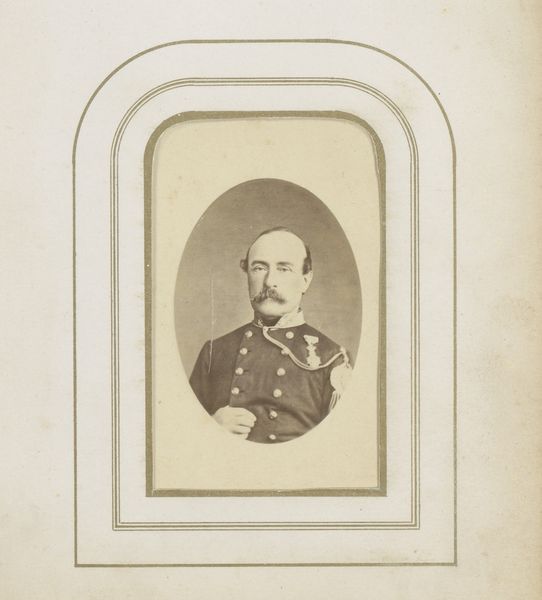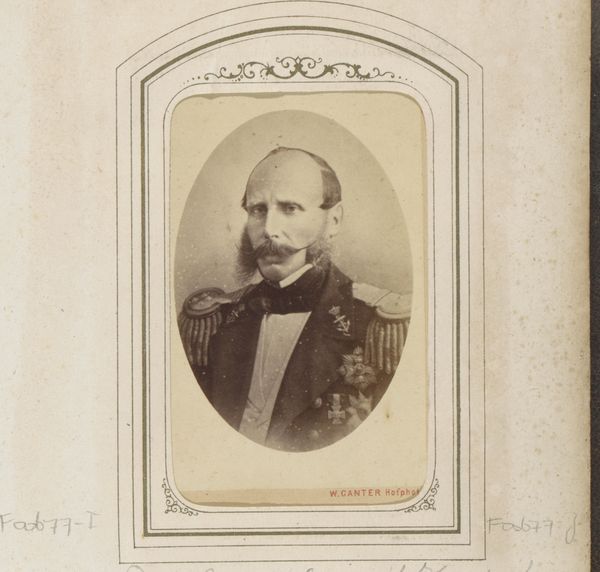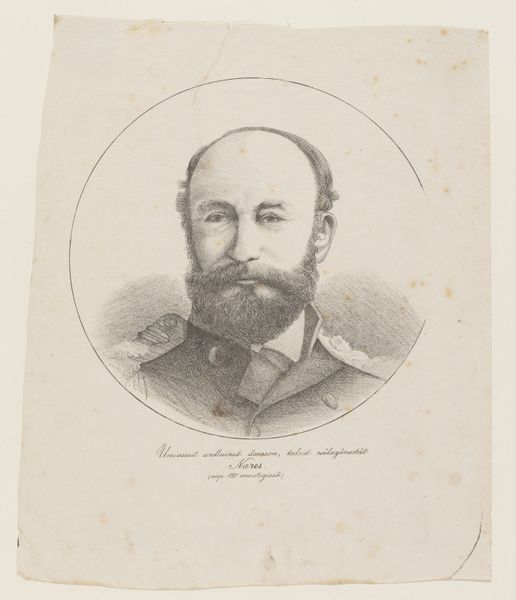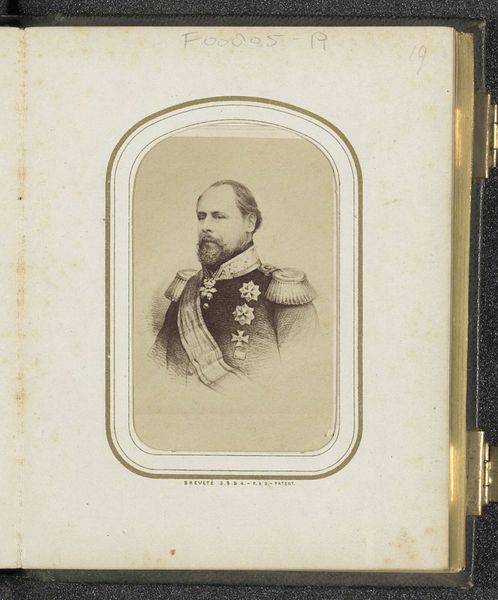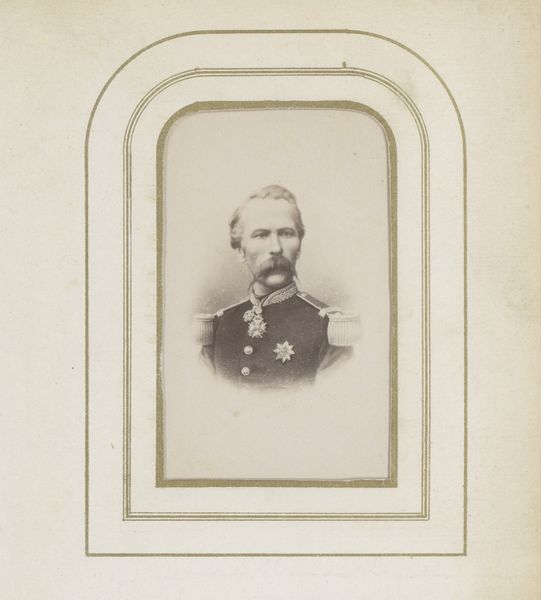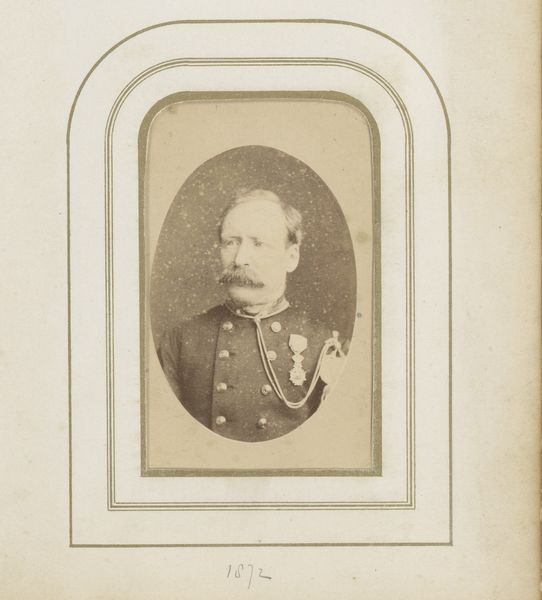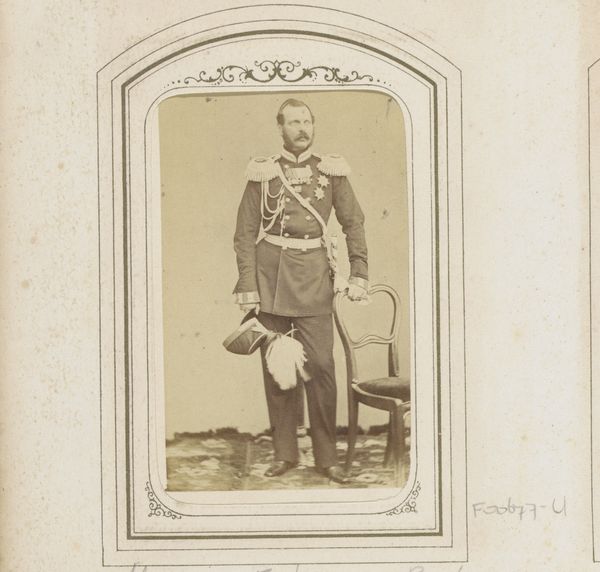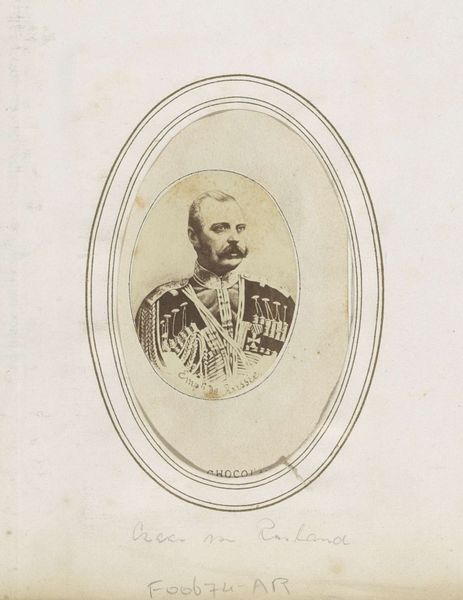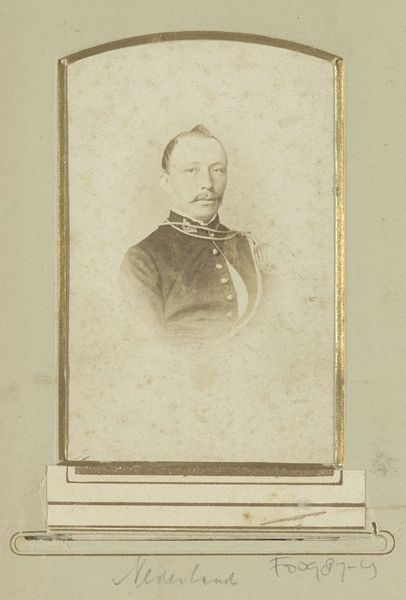
Dimensions: height 85 mm, width 53 mm
Copyright: Rijks Museum: Open Domain
Editor: This is an albumen silver print titled "Portret van Karl I, koning van Württemberg," made sometime between 1855 and 1870 by an anonymous photographer. It feels very formal, with the ornate border and Karl's imposing uniform. What stories do you think this image tells? Curator: I see this portrait as a fascinating intersection of power, representation, and the emerging technologies of the mid-19th century. It’s not just about depicting Karl I, but about crafting an image of monarchy at a time when its authority was being challenged. Consider the Romanticism label: it attempts to project an almost mythic aura. What do you notice about his gaze, and what kind of power do you think that implies in relationship to the viewer? Editor: He definitely looks stern and unwavering. I guess I just accepted that as part of being a king! I hadn't really considered how photography itself would have been perceived then. Curator: Exactly! Photography was still relatively new, so this portrait also speaks to how the ruling class adopted new media to perpetuate control and project dominance. Think about how portraiture functioned before photography. How does this photograph differ and reinforce social power dynamics in new ways? The very act of creating an ‘exact’ likeness, disseminated widely, changed the game. Editor: That makes total sense. It's like an early form of image control and propaganda, making the King seem both powerful and present, everywhere at once. I didn’t think about that. Curator: And who has access to this image? Where would it be displayed? And whose narrative does it reinforce while erasing others? Considering Karl’s political actions during his reign, and Württemberg's societal landscape, this image offers insight into both intention and legacy. Editor: Seeing it as more than just a historical portrait really makes me question what it’s trying to say. Curator: Precisely! We can unravel power structures and question the narratives being presented to us by critically examining seemingly straightforward portraits such as these.
Comments
No comments
Be the first to comment and join the conversation on the ultimate creative platform.
